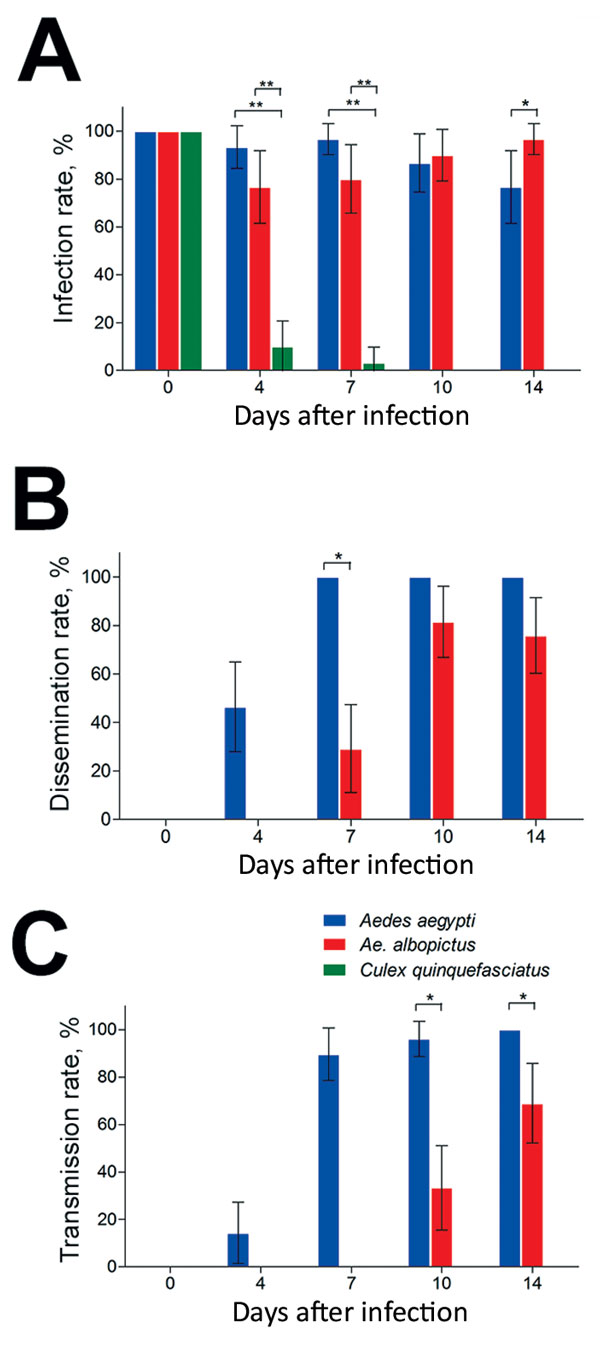Volume 23, Number 7—July 2017
Research
Competence of Aedes aegypti, Ae. albopictus, and Culex quinquefasciatus Mosquitoes as Zika Virus Vectors, China
Figure 2

Figure 2. Vector competence of Zika virus in Aedes aegypti, Ae. albopictus, and Culex quinquefasciatus mosquitoes in China. The midguts, heads, and salivary glands from mosquitoes of the 3 species were dissected at 0, 4, 7, 10, and 14 days after infection, and Zika virus was detected by reverse transcription PCR. A) Infection rate (no. positive midguts/total no. midguts). B) Dissemination rate (no. positive heads/no. positive midguts). C) Transmission rate (no. positive salivary glands/no. positive midguts). Error bars indicate 95% CIs. *p<0.05; **p<0.01.
Page created: June 19, 2017
Page updated: June 19, 2017
Page reviewed: June 19, 2017
The conclusions, findings, and opinions expressed by authors contributing to this journal do not necessarily reflect the official position of the U.S. Department of Health and Human Services, the Public Health Service, the Centers for Disease Control and Prevention, or the authors' affiliated institutions. Use of trade names is for identification only and does not imply endorsement by any of the groups named above.